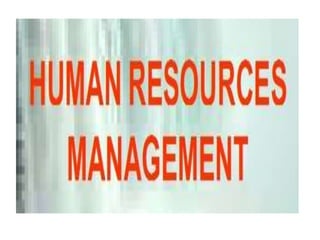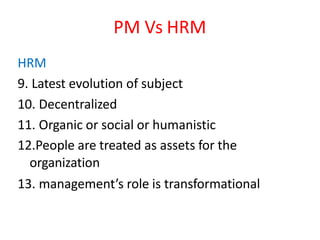This document provides information on human resource management (HRM). It defines HRM as the total knowledge, skills, and abilities of an organization's workforce. It discusses that HRM aims to develop and manage the human element of an enterprise. The document outlines the main functions of HRM such as recruitment, training, performance appraisal, and compensation. It also discusses the nature, scope, objectives and process of HRM. Finally, it compares HRM with personnel management and outlines the role of an HRM manager.






































































